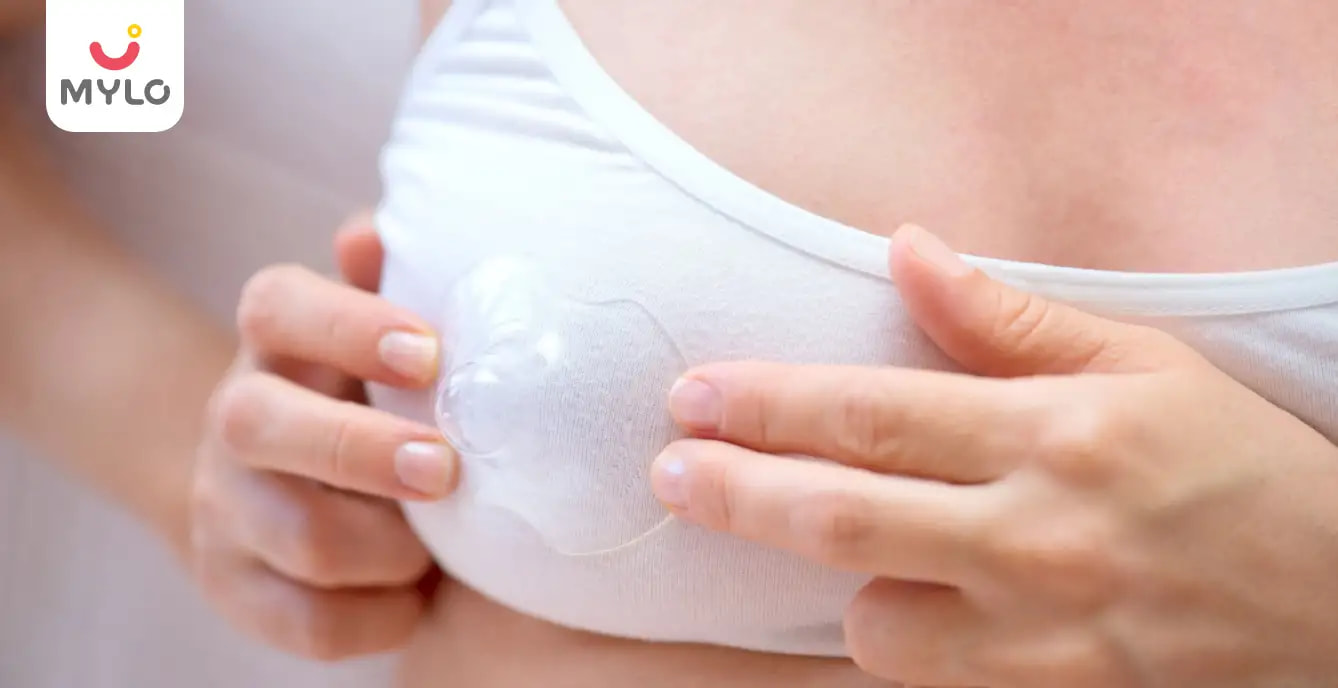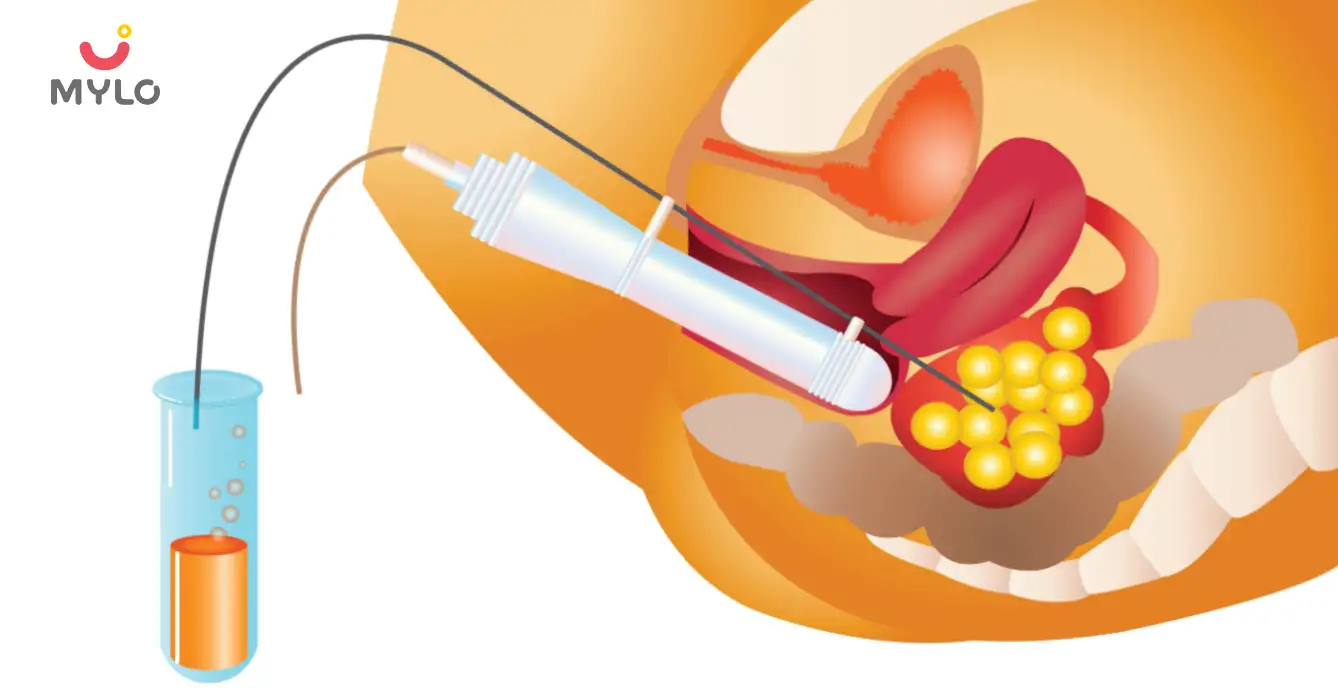Home

Breastfeeding & Lactation

Nipple Shield 101: Everything You Need to Know Before Trying One
In this Article

Breastfeeding & Lactation
Nipple Shield 101: Everything You Need to Know Before Trying One
Updated on 21 June 2023
Breastfeeding creates a profound emotional bond between a mother and her baby, fostering feelings of closeness, comfort, and nurturing. But breastfeeding can present various challenges, including latch difficulties, low milk supply, and nipple soreness. Nipple shield has been a game-changer for countless breastfeeding mothers around the world.
Whether you're a first-time mom or a seasoned pro, this comprehensive guide to nipple shields will equip you with everything you need to know and aspects like how to use nipple shield will be unleashed. Get ready to unlock the secrets of nipple shield breastfeeding!
What is a Nipple Shield?
A nipple shield is a breastfeeding accessory designed to assist mothers who may be facing challenges or difficulties while nursing their baby. It is a thin, flexible, and usually silicone-based device that is placed over the mother's nipple and areola during breastfeeding. The shield acts as a barrier between the mother's nipple and the baby's mouth, providing a different surface for latching and aiding in the establishment of a proper latch.
Nipple shields are typically shaped like a shallow dome with a small hole at the tip, allowing milk to flow through to the baby. They come in various sizes to accommodate different nipple shapes and sizes. The purpose of a nipple shield is to help facilitate breastfeeding by providing a temporary solution to common issues such as flat or inverted nipples, difficulty with latching, or sore or sensitive nipples.
How do Nipple Shields Work?
Nipple shield works by providing a modified surface for the baby to latch onto during breastfeeding. Here's a step-by-step explanation of how does nipple shield for sore nipples function:
1. Placement
Before using a nipple shield, ensure it is clean and sterilized. Gently position the shield over the nipple and areola, making sure the baby's nose aligns with the opening of the shield.
2. Latching
Encourage your baby to open their mouth wide and draw in the shield along with your nipple. The baby's lips should form a seal around the base of the shield, creating suction.
3. Milk Flow
As the baby sucks on the nipple shield, the hole at the tip allows milk to flow through and into the baby's mouth, allowing them to feed.
4. Nipple Stimulation
The baby's sucking stimulates the milk ejection reflex, promoting the release of breast milk. The nipple shield can help with the transfer of milk from the breast to the baby.
Benefits of Using a Nipple Shield for Breastfeeding
Using a nipple shield during breastfeeding can offer several benefits for both the mother and baby. Here are some of the key advantages:
1. Improved Latch
Nipple shields can help babies who struggle with latching onto the breast due to issues such as flat or inverted nipples. The shield provides a larger, more pronounced surface for the baby to latch onto, making it easier for them to establish a secure latch and effectively extract milk.
2. Nipple Protection
Nipple shields can provide a protective barrier between the baby's mouth and the mother's nipple, which can be beneficial for women experiencing soreness, cracked nipples, or sensitivity. The shield can alleviate discomfort and allow the nipple to heal while still enabling breastfeeding.
3. Milk Transfer
By facilitating a better latch, nipple shields can enhance the baby's ability to extract milk during breastfeeding. This can be particularly helpful for infants who may struggle with inadequate milk transfer due to latch issues or weak sucking reflexes.
4. Increased Milk Supply
The improved latch and more effective breastfeeding that can result from using a nipple shield can stimulate milk production. This increased milk supply can benefit both the baby's nutritional needs and the mother's milk production.
5. Extended Breastfeeding Duration
For some mothers who encounter difficulties early on in their breastfeeding journey, using a nipple shield can help them continue breastfeeding when they may have otherwise considered giving up.
You may also like: How to Get Rid of Flat Nipples to Breastfeed Your Baby Effectively
How to Use Nipple Shield?
Using a nipple shield correctly is crucial to ensure successful breastfeeding. Here is a step-by-step guide on how to use a nipple shield:
1. Cleanliness
Before each use, make sure the nipple shield is clean and sterilized. This helps maintain hygiene and prevent any potential infections. Follow the manufacturer's instructions for cleaning or sterilizing the nipple shield.
2. Proper Sizing
Choose the right size nipple shield that fits your nipple comfortably. Nipple shields come in different sizes, so it's important to select one that matches your nipple shape and size. A lactation consultant or healthcare professional can assist you in determining the appropriate size.
3. Warmth and Relaxation
Ensure you and your baby are in a calm and relaxed environment. Warmth and relaxation can help both of you feel more comfortable during breastfeeding. You can use warm compresses or gentle massage to encourage blood flow to the breast before breastfeeding.
4. Positioning
Hold the nipple shield over your nipple and areola, aligning the opening of the shield with your baby's nose. Gently bring your baby close to your breast, aiming their nose towards the opening of the shield.
5. Latching Technique
Encourage your baby to open their mouth wide, like a yawn, and draw them onto your breast along with the nipple shield. The baby's lips should form a seal around the base of the shield, creating a suction. Make sure the entire nipple and areola are inside the shield.
6. Nipple shield for flat nipples
Using a nipple shield for flat nipples is helpful as it provides a larger, more pronounced surface for the baby to latch onto, facilitating breastfeeding.
7. Monitoring Milk Flow
Watch for signs that milk is flowing through the nipple shield, such as hearing your baby swallow or observing milk leaking from the shield's tip. This indicates that your baby is effectively extracting milk.
8. Feeding Time
Allow your baby to feed until they show signs of satiety, such as releasing the nipple shield or falling asleep. If your baby unlatches during the feeding, you can try repositioning the shield and encouraging them to latch again.
9. Cleaning After Use
After each feeding, clean the nipple shield according to the recommended guidelines. Proper cleaning and maintenance of the shield help prevent any bacterial growth and ensure its safe reuse.
How to Determine the Right Nipple Shield Sizing?
Determining the right nipple shield sizing is important for optimal comfort and effectiveness during breastfeeding. Here are some steps to help you determine the correct size.
1. Consult with a Lactation Consultant
It's highly recommended to seek guidance from a lactation consultant or healthcare professional who has expertise in breastfeeding.
2. Measure Nipple Diameter
Using a ruler or measuring tape, measure the diameter of your nipple at the base. The diameter is the distance across the widest part of the nipple.
3. Compare with Nipple Shield Sizing Charts
Different nipple shield brands provide sizing charts that correlate nipple diameter measurements with the corresponding shield size.
4. Check Fit and Comfort
Once you have the nipple shield, try it on to assess the fit and comfort. The shield should fit securely over your nipple and cover the areola completely, allowing your baby to latch onto both the shield and your breast.
Also Read: The Ultimate Guide to Getting a Perfect Latch in Breastfeeding
FAQs
1. What is the purpose of a nipple shield?
The purpose of a nipple shield is to assist with breastfeeding by addressing specific challenges that can hinder successful nursing like latch difficulties, nipple discomfort, milk transfer issues, and transitioning from bottle to breast.
2. Does nipple shield reduce milk?
The use of a nipple shield can sometimes affect milk supply, but it's not a universal outcome. Nipple shield can affect the milk supply if the latch is not proper and can also affect milk removal from breast due to an additional barrier.
3. Is it OK to keep using Nipple Shield?
Using a nipple shield is generally considered acceptable and can be a helpful tool for breastfeeding under certain circumstances. However, it is important to keep in mind that nipple shields are typically intended as a temporary solution.
Closing Thoughts
In conclusion, nipple shields can be valuable tools to assist with breastfeeding challenges such as latch difficulties, nipple discomfort, and milk transfer issues. However, it is important to use nipple shields under the guidance of a lactation consultant or healthcare professional and work towards resolving the underlying issues that led to their use.
References
1. Chow, S., Chow, R., Popovic, M., Lam, H., Merrick, J., Ventegodt, S., Milakovic, M., Lam, M., Popovic, M., Chow, E., & Popovic, J. (2015). The Use of Nipple Shields: A Review. Frontiers in Public Health, 3.
2. Kronborg, H., Foverskov, E., Nilsson, I., & Maastrup, R. (2016). Why do mothers use nipple shields and how does this influence duration of exclusive breastfeeding? Maternal & Child Nutrition, 13(1), e12251.



Written by
Madhavi Gupta
Dr. Madhavi Gupta is an accomplished Ayurvedic doctor specializing in Medical content writing with an experience of over 10 years.
Read MoreGet baby's diet chart, and growth tips

Related Articles
Related Questions
Influenza and boostrix injection kisiko laga hai kya 8 month pregnancy me and q lagta hai ye plz reply me

Hai.... My last period was in feb 24. I tested in 40 th day morning 3:30 .. That is faint line .. I conculed mylo thz app also.... And I asked tha dr wait for 3 to 5 days ... Im also waiting ... Then I test today 4:15 test is sooooo faint ... And I feel in ma body no pregnancy symptoms. What can I do .

Baby kicks KB Marta hai Plz tell mi

PCOD kya hota hai

How to detect pcos

Related Topics
RECENTLY PUBLISHED ARTICLES
our most recent articles

Stem Cell Banking
All About Stem Cells, Their Usage and Potential Effectiveness in the Treatment of Different Diseases

Diabetes during Pregnancy
How to Manage Your Gestational Diabetes? Find 5 Easy Ways to Maintain the Sugar Level in Pregnancy and Stay Healthy!

Breast Milk
How to Get Rid of Flat Nipples to Breastfeed Your Baby Effectively

In Vitro Fertilization (IVF)
The Ultimate Guide to Egg Retrieval: Everything You Need to Know

Sex Life
Loss of Libido: Causes, Symptoms, and Treatment

Leisure
Top 10 Romantic Movies to Watch on Netflix in 2023
- Top 10 Romantic Shows to Watch on Netflix in 2023
- Top 10 Thriller Movies to Watch on Netflix in 2023
- Top 10 Thriller Shows to Watch on Netflix in 2023
- Azoospermia and Male Fertility: What Every Man Should Know
- Premature Ovarian Failure: How it Affects Female Fertility and What You Can Do About It
- Erectile Dysfunction: What Causes It and How to Treat It
- Positive Signs After Embryo Transfer: What to Look Out For
- Sleeping Position After IVF & Other Precautions That Can Boost Your Chances of Success
- Disadvantages of Breastfeeding No One Tells You About
- IVF Failure Reasons: Exploring the Challenges Couples Face with Infertility
- Putrajeevak Beej: The Ancient Seed for Modern Health and Fertility
- Shivlingi Beej: The Ultimate Guide to Boosting Your Fertility Naturally
- Milk Thistle in Ayurveda: Unlock The Healing Potential and Health Benefits of This Herb
- Orchidopexy: All You Need to Know About Its Procedure, Risks, and Recovery


AWARDS AND RECOGNITION

Mylo wins Forbes D2C Disruptor award

Mylo wins The Economic Times Promising Brands 2022
AS SEEN IN
















- Mylo Care: Effective and science-backed personal care and wellness solutions for a joyful you.
- Mylo Baby: Science-backed, gentle and effective personal care & hygiene range for your little one.
- Mylo Community: Trusted and empathetic community of 10mn+ parents and experts.
Product Categories
baby carrier | baby soap | baby wipes | stretch marks cream | baby cream | baby shampoo | baby massage oil | baby hair oil | stretch marks oil | baby body wash | baby powder | baby lotion | diaper rash cream | newborn diapers | teether | baby kajal | baby diapers | cloth diapers |








